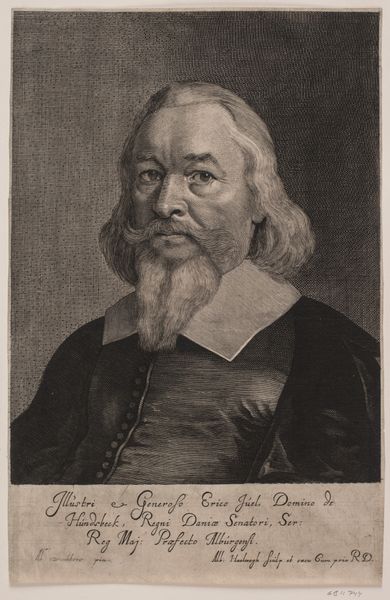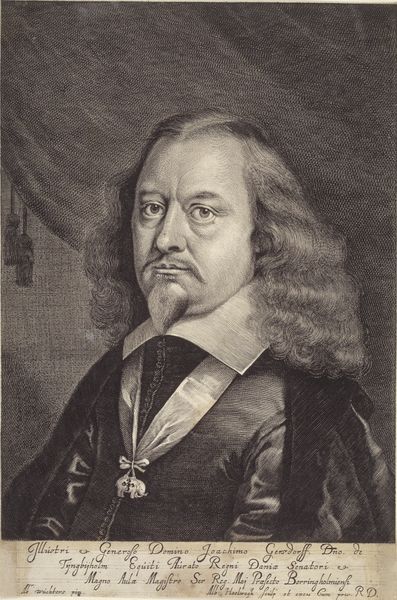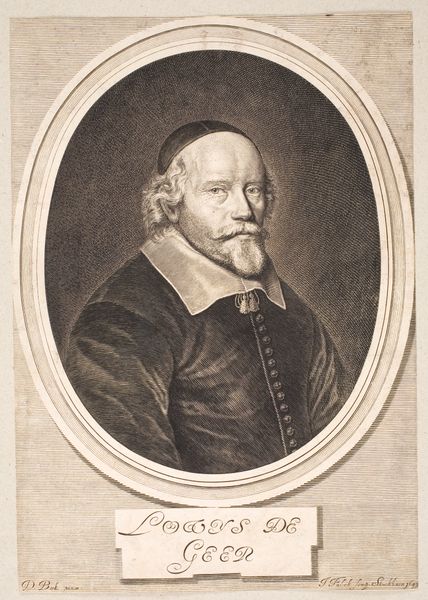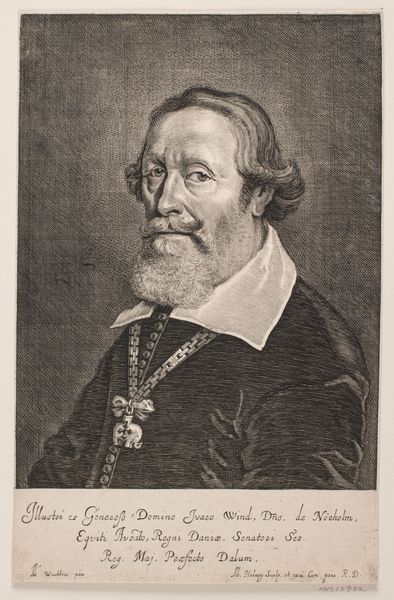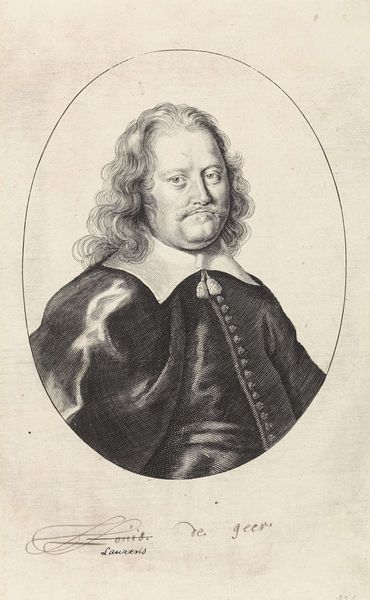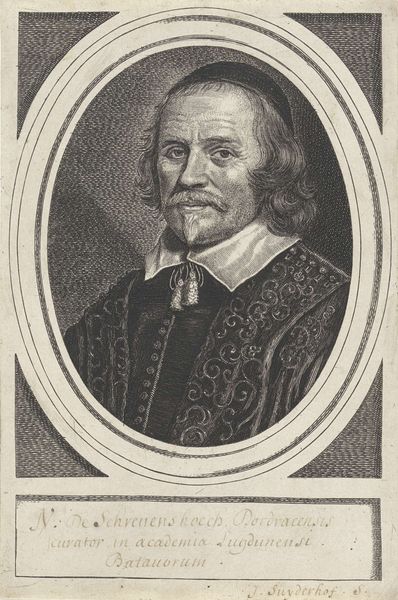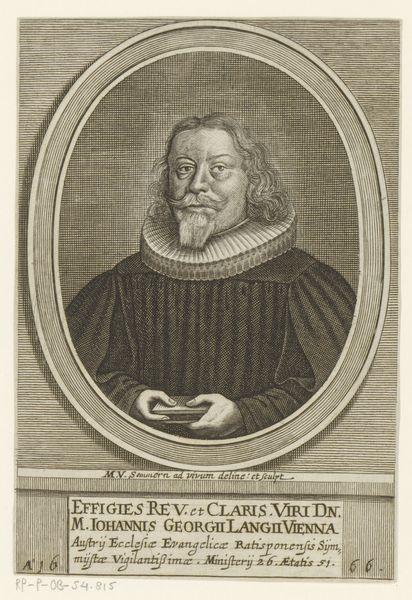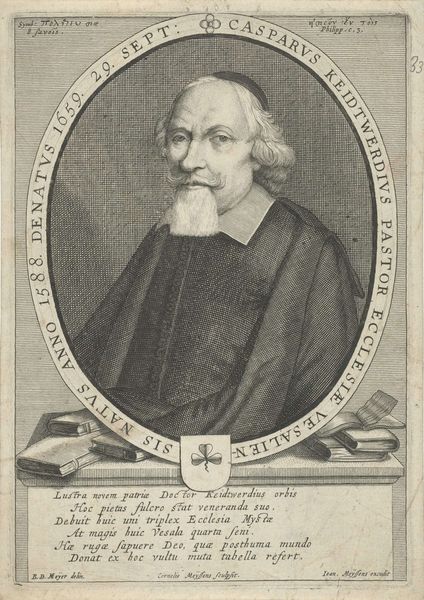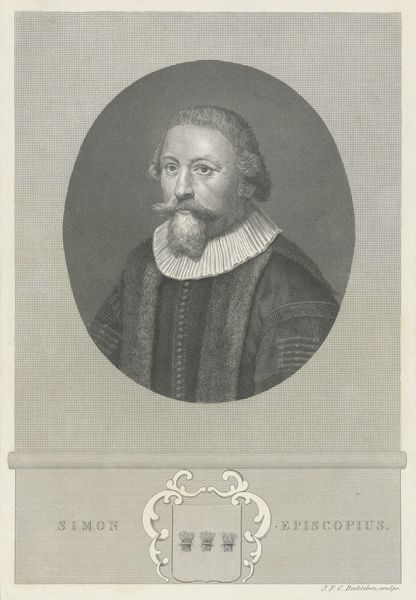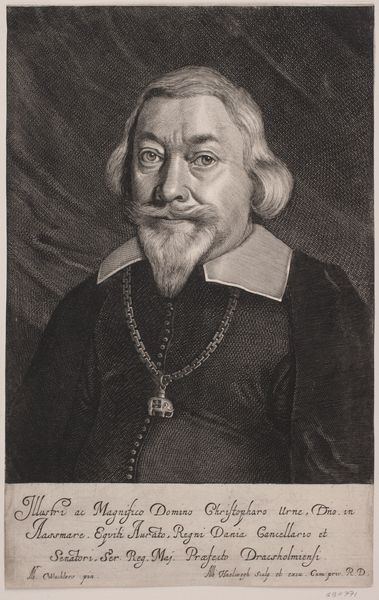
print, engraving
#
portrait
#
baroque
# print
#
history-painting
#
engraving
Dimensions: 230 mm (height) x 153 mm (width) (bladmaal)
Curator: Here we have Albert Haelwegh's engraving, "Malte Sehested. Fra ligprædiken", created between 1660 and 1665. The print resides here at the SMK. It's a very striking Baroque portrait, isn’t it? Editor: Absolutely. There’s a starkness to it despite the Baroque label. The heavy blacks and meticulously rendered textures almost give it a sense of foreboding. It’s powerful. Curator: Indeed. Considering the title translates to "From a funeral sermon", this imagery is especially relevant. It is part of a broader narrative, as were all portraits of powerful people from this era; consider the social and political implications for an individual to be commemorated during and following their lifetime in this visual format. The details, particularly the armor, signal not just wealth, but participation in upholding societal order—or enforcing it. Editor: The artist’s rendering of light definitely sculpts a commanding presence, doesn't it? The high contrast amplifies the sitter’s features, and there is particular detail in the folds of the collar and the intricate textures of the armor. Structurally, all these different lines, shades and shapes point to a center, around the sitter’s face, a typical characteristic of formal portraits, but that is greatly amplified here. Curator: Consider further that Sehested’s prominent, dignified presence was carefully curated. The way in which his beard, mustache, and hair are presented signal authority, specifically to men in positions of power. There’s a very intentional articulation of gender and its connection to societal power being upheld. Editor: Yes, the strategic use of light creates the different tonal range from the heavy shadows, and, to some extent, emphasizes these ideas of masculinity that are reflected through that characterization, but also brings us back to the Baroque roots with the theatrics. Curator: Examining these images reveals to us, still today, so much about the values held by certain societies during specific moments in time, the relationship between identity and power, but it is not, by any means, objective. Editor: Precisely, what seemed obvious or even natural then, as is immortalized within that image, is obviously a subject of intense debate now, isn't it? It also demonstrates that seemingly basic and obvious stylistic decisions within an artistic composition are completely deliberate and work as an aesthetic and political narrative that reflects its time.
Comments
No comments
Be the first to comment and join the conversation on the ultimate creative platform.
